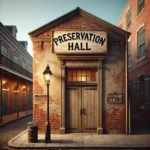The Witch House, located in Salem, Massachusetts, stands as a chilling reminder of one of the darkest chapters in American history—the Salem Witch Trials of 1692. As the only remaining structure in Salem directly connected to the trials, The Witch House offers a unique window into the Puritan past, where fear and superstition led to the execution of 20 individuals. This house belonged to Judge Jonathan Corwin, a key figure in the trials, and has since become a historic landmark, preserving the haunting legacy of the era. Through this article, we explore the house’s history, its connection to the trials, and its lasting impact.
The Witch Trials: A Brief Overview
The Salem Witch Trials were a series of hearings and prosecutions that took place in 1692, driven by paranoia, religious fervor, and accusations of witchcraft. Over the course of several months, more than 200 people were accused, with 20 individuals—mostly women—executed by hanging. The trials reflected deep societal fears of the supernatural, and these events left a profound scar on the early American psyche. Today, the trials are seen as a tragic period of mass hysteria and miscarriage of justice.
The trials centered around the belief that witches had made pacts with the devil to harm others. The community of Salem Village (now Danvers, Massachusetts) became the epicenter of these allegations, leading to widespread panic and death.
The Witch House: Judge Jonathan Corwin’s Home
The Witch House, built in the mid-17th century, was home to Judge Jonathan Corwin, one of the judges presiding over the Salem Witch Trials. It is the only structure still standing in Salem with direct ties to the trials, making it a rare and significant historical landmark.
While there is no evidence that the accused witches were ever tried or imprisoned in the house, Judge Corwin’s role in the trials makes this house an essential part of Salem’s dark history. Corwin and his family lived in the house during the height of the trials, and it was here that he made decisions that would lead to the persecution of innocent people.
The house is a traditional example of colonial architecture, featuring steep gables and small, diamond-paned windows, all of which evoke the Puritan era. Inside, the home has been restored to reflect its 17th-century appearance, providing visitors with a glimpse into the domestic life of the time and the cultural atmosphere that gave rise to the witch trials.
The Restoration and Preservation of The Witch House
In the early 20th century, The Witch House faced the threat of demolition due to urban development. Thanks to local preservation efforts, however, it was saved and restored to its original condition. This careful restoration process aimed to preserve its historical integrity, and today, it stands as a museum that tells the story of the Salem Witch Trials and the daily life of those who lived during the time.
Visitors to The Witch House can explore various exhibits on 17th-century life, the legal process of the witch trials, and the influence of religion and superstition on the Puritans. The house’s preservation has ensured that future generations can learn from the mistakes of the past and reflect on the dangers of unchecked fear and hysteria.
Visiting The Witch House Today
Today, The Witch House operates as a museum, attracting thousands of visitors annually. Its historical exhibits provide context not only for the trials but also for Puritan society’s complex relationship with religion, law, and the supernatural. Visitors can tour the home’s dark, atmospheric rooms, which contain period-appropriate furnishings and artifacts that evoke life in the late 1600s.
Interactive exhibits offer insights into the judicial process of the trials, the accusations made, and the widespread fear that gripped Salem. The Witch House is a key stop on Salem’s historic tours and is central to understanding the full scope of the town’s involvement in the witch hysteria. It remains a haunting symbol of the consequences of fear-driven persecution.
The Witch House stands as a powerful reminder of the dangers of mass hysteria and the consequences of unchecked fear. While it is a place deeply tied to a tragic past, it is also a space for reflection, learning, and remembrance. The Salem Witch Trials left an indelible mark on American history, and The Witch House serves as a direct link to this dark chapter. By preserving this house, we ensure that the lessons from Salem’s history are never forgotten, allowing visitors to reflect on the fragility of justice and the importance of rational thought in the face of fear.


